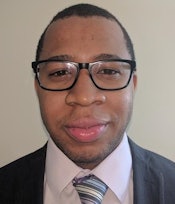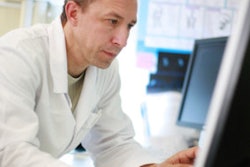
Many patient visits to the hospital involve imaging, and one of the most important metrics patients use to measure satisfaction with radiology services is exam wait time. So how can wait time be streamlined?
With just a few simple interventions, Temple University Hospital in Philadelphia reduced its outpatient CT wait times by two-thirds -- from three hours to one, according to a new study published online September 1 in the Journal of the American College of Radiology.
It all comes down to making the best use of the department's -- and patients' -- time, lead author Dr. Farouk Dako told AuntMinnie.com.
"Instead of the patient already being in the office while our staff determined that the exam order was correct, or whether the patient had the right labs, we made sure to do that work ahead of time," he said.
A key metric
 Dr. Farouk Dako from Temple University Hospital.
Dr. Farouk Dako from Temple University Hospital.As the U.S. healthcare model continues to transition to one based on value rather than volume, radiology departments are facing increasing pressure to provide patient-centered, efficient care that increases patient satisfaction and reduces operating costs, according to Dako and colleagues.
"Perceived wait time has been shown to be a significant predictor of overall patient satisfaction in radiology departments," they wrote. "Thus, patient idle time becomes a primary differentiator between a positive and negative overall patient experience, even affecting confidence in care providers and perceived care quality."
Temple University Hospital's radiology staff, administration, and patients knew the outpatient CT process was inefficient, leading to long wait times and frequent rescheduling of exams, according to the authors. Why? Perhaps because, as with many "safety net" hospitals, resources haven't been dedicated to tackling issues such as imaging wait times, Dako said.
To address the issue, the researchers used value stream mapping (VSM) -- a technique developed by Toyota in the 1970s -- to perform a baseline analysis of the workflow for outpatient CT studies. VSM identifies steps in a chain of processes and breaks them down into three categories: those that add value, those that are value-enabling, and those that are unnecessary and contribute to waste.
Based on 20 hours of observation, Dako and colleagues determined that the following were contributing to outpatient CT exam inefficiency:
- Order inaccuracies, addressed on patient arrival rather than beforehand
- Missing laboratory work
- Form redundancy
- Poor communication between referring physicians and radiology
These factors meant that patients arriving for outpatient CT had an average total time from arrival to exam completion of 3.1 hours, with a true process time from order to scan completion of 87 minutes.
By addressing these factors before patients arrived, the researchers reduced total time from patient arrival to exam completion from three hours to one, and they reduced true process time from 87 minutes to 32 minutes.
| Effect of new outpatient CT exam protocol | ||
| Metric | Old protocol | New protocol |
| Total time from arrival to completed scan | 3.1 hours | 1.1 hour |
| True process time from order to completed scan | 87 minutes | 32 minutes |
| Total time in scanner | 2.5 minutes | 2.5 minutes |
| Process accuracy (percentage of correct completion of task on first attempt) | < 20% | 88% |
Streamlining the department's outpatient CT process also resulted in another benefit: There was a 19% increase in the average number of outpatient CT scans performed daily -- from 37 to 44, Dako and colleagues noted.
More efficient
The intervention didn't produce additional work for radiology staff, Dako said. It's just that the work was done before the patient arrived.
"Anytime you try to change existing processes, people are going to be concerned that there will be more work," he said. "But really what we did is just change when the patient came into the process. But determining whether a patient has the right labs, or whether the CT needs to be performed with contrast or not, is already part of the technologist's job."





















